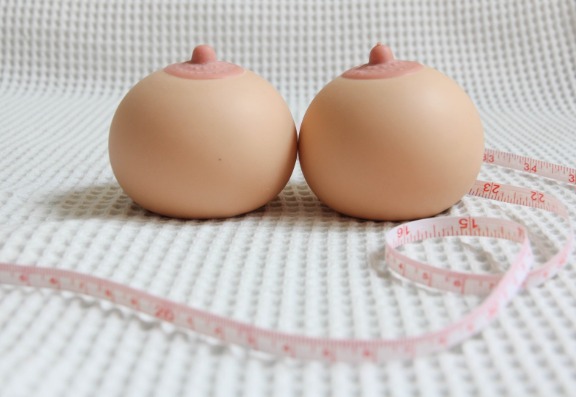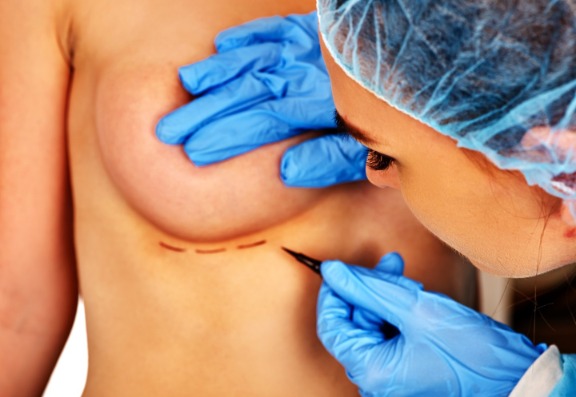The nipple/areola area consists of the central projection, known as the nipple, and the colored circular dish-shaped component, the areola.
Although essentially, the function of the nipple/areola complex is for breastfeeding, it is also of course one of the most sensitive areas of the female body.
Nipple and areola surgery are becoming increasingly popular in both women and men.
Many factors have contributed to an increased demand for corrective or aesthetic surgery.
These include the prevalence of images of the female body on TV, in magazines and on the internet, and of course on the beach too, where the site of topless sunbathers is now commonplace.
Disproportionately large areolas can be associated with large, saggy breasts, or with conditions such as tuberous breasts. Women and men with overly large areolas or nipples can often be unhappy with the appearance of their bodies. Pregnancy and breastfeeding can also contribute to the formation of overly large areolas.
‘Normal’ areolas are 3.5 – 4.5cm in diameter and circular in shape. Sometimes the areola can be oval or irregular in shape.
The expanded areola can be associated with gynecomastia (enlarged breasts) in men and can be corrected in conjunction with the gynecomastia procedure.

Women with inverted nipples can have problems breastfeeding, or may wish to have the inversion corrected purely for aesthetic reasons. Normal nipples in men vary in size, shape, and level. Excessively protruding nipples can rub against clothing causing discomfort or may show through clothing. These are among the reasons my patients request nipple reduction.
Nipple inversion is typically classified into three groups;
Grade one is where the nipple can be pulled inwards, but at other times protrude. A “shy” nipple can point out in cold temperatures such as cold water or can be brought out with some massage or stimulation.
Grade two inversion means the nipples naturally invert, although can be pulled outwards, allowing it to sit in an everted position and appear to stick out. Once released, the nipple will gradually sink back into an inverted position.
In Grade three, true inverted nipples are present from birth and do not protrude with cold or stimulation. These nipples are so inverted to the underlying breast tissue that they cannot be pulled outwards.
This is usually caused by a connection to the underlying tissue, ligaments, and skin. Ligaments along the milk ducts, which connect to the nipples, are shorter and pull the nipple in towards the breast tissue.
If nipples become inverted later in life, or after breastfeeding, the cause can be that the skin of the breast has become looser and more relaxed around the nipples, making the nipples appear to be inverted.
If a previously ‘normal’ nipple suddenly becomes inverted, it is important to see your doctor, as this could potentially be serious.

Areola reduction can be carried out to reduce the size of the areola and to create a more circular, regular shape. It can be carried out under local anesthetic.
The surgery can also be performed during breast augmentation, breast reduction, or breast lift surgery. In these cases, it would usually be carried out under general anesthetic.
Nipple reduction, areola reduction, and the correction of inverted nipples are relatively simple procedures.
They can be performed under local anesthetic and generally take less than one hour.
Because these procedures are performed under local anaesthetic, the recovery time is relatively short.
You should take things easy for a week or so after the surgery, but don’t stop moving altogether!
Take short walks and resume other gentle and sensible activities that won’t leave you feeling exhausted or raise your blood pressure.
The newly shaped nipples or areola will be held in place by a series of dissolvable stitches and a special ‘purse string’ suture is used to avoid stretching of the scar.
As with any surgery, it is important to consider the possibility of complications occurring. These can include scarring, infection, bleeding, wound healing problems, altered sensation, asymmetry, under or overcorrection, hyperpigmentation, hypopigmentation (dark or light scar), and the possibility of revision surgery.
Costs for areola reduction, nipple reduction, or inverted nipple correction, under local anaesthetic, start from about £1,000 for one side, up to over £2,000 for both sides, depending on the surgery and the surgeon.
If you want to read more, the experts at Consulting Room really know what they're talking about and have put together some nipple/areola surgery, gynecomastia, breast augmentation, breast reduction, breast lift surgery, scarring, and hyperpigmentation FAQs just for you.
If you have more questions, you can use the nipple/areola surgery, gynecomastia, breast augmentation, breast reduction, breast lift surgery, scarring, and hyperpigmentation questions feature to talk to our panel of trained medical experts.
If you're keen to get started with any of these treatments right away then you're in luck - those clever folks also have a list of trusted, accredited nipple/areola surgery, gynecomastia, breast augmentation, breast reduction, breast lift surgery, scarring, and hyperpigmentation clinics in your area.
Thanks to the author of this blog Mr. Vadodaria, who has had extensive training in plastic surgery in the United Kingdom.
He completed his higher surgical training in plastic surgery and was awarded FRCS (Plastic Surgery). He has been on the specialist register of the General Medical Council since 2004 (Registration Number 4386421).
Mr Vadodaria has presented more than 90 papers at national and international plastic surgical congresses. He has innovated new instruments, simulators and plastic surgical techniques, which are published in peer-reviewed plastic surgery journals.

I would be approaching 50 soon. I am finding myself increasingly concerned how do I maintain my skin and prepare myself for when I am older...
A recent investigation by 5 News has raised alarm over UK clinics using illegal human-derived exosomes in so-called “next-gen” facials - the latest TikTok-fuelled trend promising younger, smoother skin.
You’ve definitely heard the buzz about Polynucleotides… but what are they really?
Hey, wait!
Before you go.....
Let's stay in touch, pop your details here and we'll send our editor's hand-picked updates on your fave subjects.